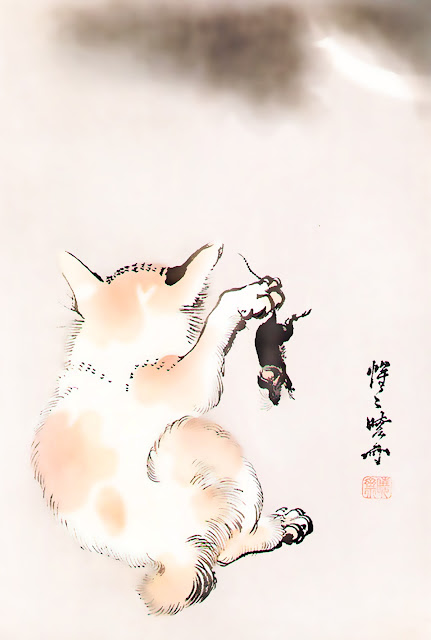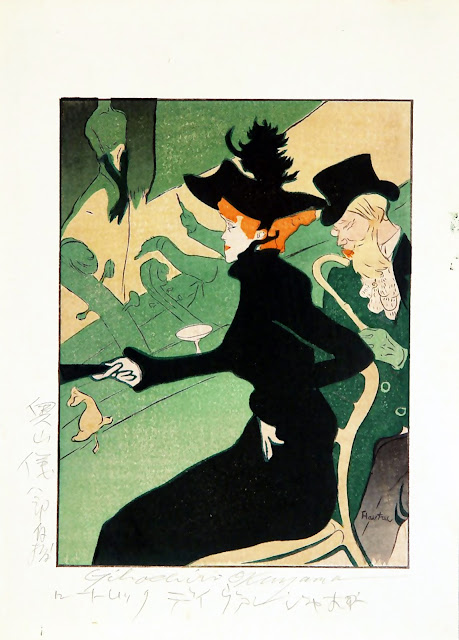KABUKI JU-HACHI BAN - SUKEROKU (First Edition)
By Tadamasa Ueno (1904 - 1970)
Tadamasa Ueno is most noted
for his dramatic kabuki actor prints, many of which bear a resemblance to the
highly stylized figures of ukiyo-e. Born Ueno Kitsumi, he studied from
an early age with Torii Kiyotada (Torii VII); the Torii family representing a
long line of artists closely associated with the kabuki theater and with
printmaking as far back as the 17th century. Another member of the famous Torii
family, Torii Kotondo, was designing prints around the same time. As was
traditional among many ukiyo-e artists, his artist name Tadamasa was partially
derived from his teacher's name, both containing the syllable tada.
In 1940, Tadamasa met Watanabe
Shozaburo to discuss publishing woodblock prints based on his kabuki paintings;
a meeting which resulted in a collaboration on two series of actor prints. The
first series titled Eighteen Kabuki Makeups (Kabuki kumadori juhachi ban)
was published duringfrom 1940 to 1941, with one print being released each
month. An additional print, New Year’s Fortune Sanbaso Makeup, was included
with this series. All of these prints were signed with the Tadamasa signature,
but with a variety of different seals.
After the first series was
completed, Watanabe began publishing a second series of kabuki makeup (Zoku
kumadori juhachi ban), but was forced to abandon work due to war shortages.
Only seven prints in this series were ever completed. After World War II,
Tadamasa continued to work as a kabuki artist designing billboards for the
theater in Tokyo. In 1949, he was accepted as a member of the Torii family and
granted the name Torii Tadamasa.
During the early 1950s,
Tadamasa worked on several series of kabuki prints with the publishers
Shokokusha and Dairesha. With Shokokusha, he designed a 12 print kabuki
calendar series as well as a series of 18 kabuki prints (Kabuki juhachi ban).
These prints were carved by Okura Hanbei and Nagashima Michio, and printed by
Shinmi Saburo. With the publisher Dairesha, Tadamasa designed another series of
18 kabuki prints titled One of Eighteen Kabuki Plays (Kabuki juhachi ban no
uchi). This series was carved by Maeda Kentaro and printed by Ono Hikojiro.
This particular print dted
1952, is from on of the kabuki dynasty,
Ichikawa family's 18 famous plays. "Sukeroku". Swashbuckling hero,
Sukeroku.






